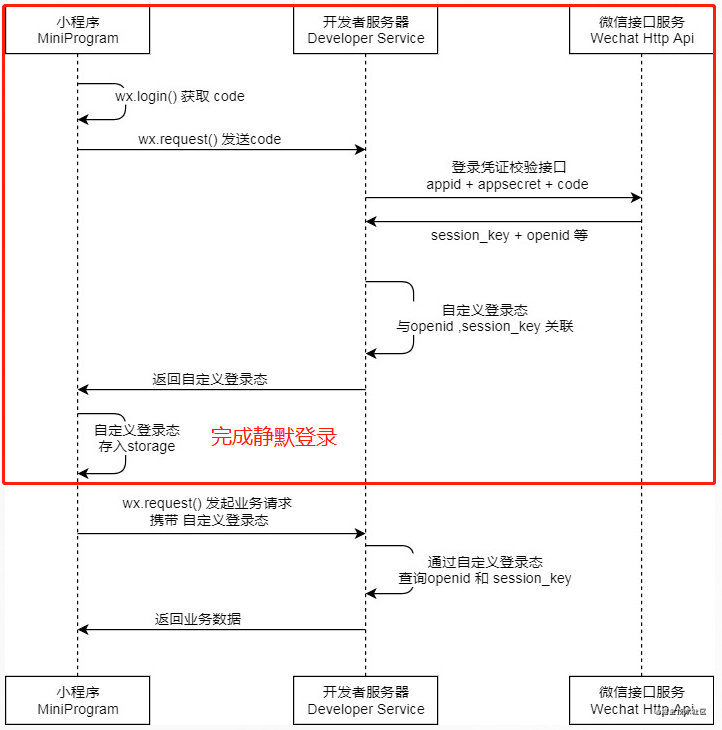在之前的所有样例中,登录表单一直都是使用 Spring Security 提供的默认登录页,登录成功后也是默认的页面跳转。有时我们想要使用自定义的登录页,或者在前后端分离的开发方式中,前后端的数据交互通过 JSON 进行,这时登录成功后就不是页面跳转了,而是一段 JSON 提示。下面通过样例演示如何进行登录表单的个性化配置。
六、自定义登录页面、登录接口、登录成功或失败的处理逻辑
1、样例代码
(1)首先修改 Spring Security 配置,增加相关的自定义代码:
将登录页改成使用自定义页面,并配置登录请求处理接口,以及用户密码提交时使用的参数名。
自定义了登录成功、登录失败的处理逻辑,根据情况返回响应的 JSON 数据。
@Configuration public class MyWebSecurityConfig extends WebSecurityConfigurerAdapter { // 指定密码的加密方式 @SuppressWarnings("deprecation") @Bean PasswordEncoder passwordEncoder(){ // 不对密码进行加密 return NoOpPasswordEncoder.getInstance(); } // 配置用户及其对应的角色 @Override protected void configure(AuthenticationManagerBuilder auth) throws Exception { auth.inMemoryAuthentication() .withUser("root").password("123").roles("DBA") .and() .withUser("admin").password("123").roles("ADMIN") .and() .withUser("hangge").password("123").roles("USER"); } // 配置 URL 访问权限 @Override protected void configure(HttpSecurity http) throws Exception { http.authorizeRequests() // 开启 HttpSecurity 配置 .antMatchers("/db/").hasRole("DBA") // db/ 模式URL需DBA角色 .antMatchers("/admin/").hasRole("ADMIN") // admin/ 模式URL需ADMIN角色 .antMatchers("/user/").hasRole("USER") // user/ 模式URL需USER角色 .anyRequest().authenticated() // 用户访问其它URL都必须认证后访问(登录后访问) .and().formLogin() // 开启登录表单功能 .loginPage("/login_page") // 使用自定义的登录页面,不再使用SpringSecurity提供的默认登录页 .loginProcessingUrl("/login") // 配置登录请求处理接口,自定义登录页面、移动端登录都使用该接口 .usernameParameter("name") // 修改认证所需的用户名的参数名(默认为username) .passwordParameter("passwd") // 修改认证所需的密码的参数名(默认为password) // 定义登录成功的处理逻辑(可以跳转到某一个页面,也可以返会一段 JSON) .successHandler(new AuthenticationSuccessHandler() { @Override public void onAuthenticationSuccess(HttpServletRequest req, HttpServletResponse resp, Authentication auth) throws IOException, ServletException { // 我们可以跳转到指定页面 // resp.sendRedirect("/index"); // 也可以返回一段JSON提示 // 获取当前登录用户的信息,在登录成功后,将当前登录用户的信息一起返回给客户端 Object principal = auth.getPrincipal(); resp.setContentType("application/json;charset=utf-8"); PrintWriter out = resp.getWriter(); resp.setStatus(200); Map<String, Object> map = new HashMap<>(); map.put("status", 200); map.put("msg", principal); ObjectMapper om = new ObjectMapper(); out.write(om.writeValueAsString(map)); out.flush(); out.close(); } }) // 定义登录失败的处理逻辑(可以跳转到某一个页面,也可以返会一段 JSON) .failureHandler(new AuthenticationFailureHandler() { @Override public void onAuthenticationFailure(HttpServletRequest req, HttpServletResponse resp, AuthenticationException e) throws IOException, ServletException { resp.setContentType("application/json;charset=utf-8"); PrintWriter out = resp.getWriter(); resp.setStatus(401); Map<String, Object> map = new HashMap<>(); // 通过异常参数可以获取登录失败的原因,进而给用户一个明确的提示。 map.put("status", 401); if (e instanceof LockedException) { map.put("msg", "账户被锁定,登录失败!"); }else if(e instanceof BadCredentialsException){ map.put("msg","账户名或密码输入错误,登录失败!"); }else if(e instanceof DisabledException){ map.put("msg","账户被禁用,登录失败!"); }else if(e instanceof AccountExpiredException){ map.put("msg","账户已过期,登录失败!"); }else if(e instanceof CredentialsExpiredException){ map.put("msg","密码已过期,登录失败!"); }else{ map.put("msg","登录失败!"); } ObjectMapper mapper = new ObjectMapper(); out.write(mapper.writeValueAsString(map)); out.flush(); out.close(); } }) .permitAll() // 允许访问登录表单、登录接口 .and().csrf().disable(); // 关闭csrf } }
(2)在 resource/templates 目录下创建一个登录页面 login_page.html,内容如下:
<!DOCTYPE html>
<html lang="en">
<head>
<meta charset="UTF-8">
<title>Title</title>
</head>
<body>
<form action="/login" method="post">
<div>
<label>用户名</label>
<input type="text" name="name"/>
</div>
<div>
<label>密码</label>
<input type="password" name="passwd"/>
</div>
<div>
<input type="submit" value="登陆">
</div>
</form>
</body>
</html>
(3)最后我们自定义一个 MVC 配置,并重写 addViewControllers 方法进行映射关系配置即可。
@Configuration
public class WebMvcConfig implements WebMvcConfigurer {
@Override
public void addViewControllers(ViewControllerRegistry registry) {
registry.addViewController("/login_page").setViewName("login_page");
}
}
2、运行测试
(1) 随便访问一个接口,浏览器会自动跳转到我们自定义的登录页面:

(2)如果填写正确的用户名密码提交,则返回如下信息:

(3)如果填写错误的用户名密码条,则返回如下信息:













